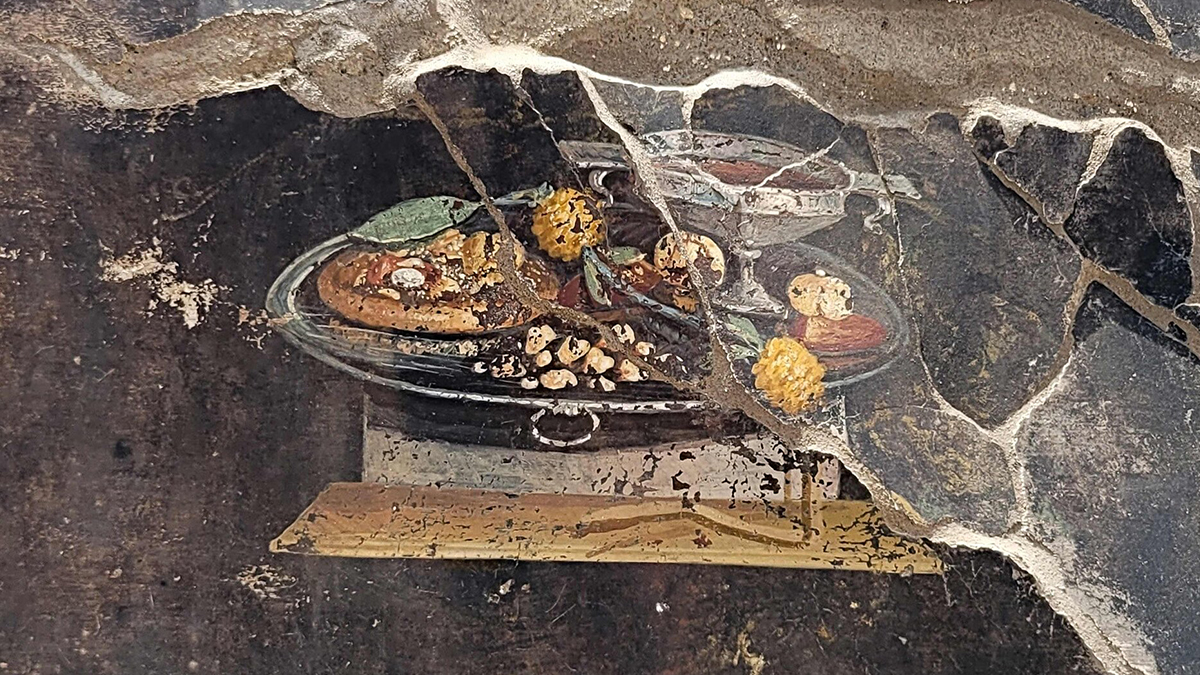Click here to read the Spanish version.
In an official statement, the archaeologists insisted that the dish portrayed in this 2,000-year-old fresco did not mean that the History of Pizza was about to be rewritten: ‘most of the characteristic ingredients, such as tomato and mozzarella, are missing.’ Still, they admitted, the flat, round dough topped with pomegranate, spices and what might have been a precursor to modern pesto.
The ancestor of a modern dish
The fresco was discovered during the excavation of the atrium of the house of Insula 10, Regio IX, a site that is currently being explored. It is a house that connected to a bakery, where this still life has been found, represented by a silver tray with a glass of wine, pomegranates, figs, a garland of yellow strawberries, dates and nuts, as well as the alleged proto-pizza, decoded through this iconographic analysis.
This artistic genre, known in antiquity as Xenia, was inspired by the ‘hospitality gifts’ linked to the sacred sphere, which were offered to guests in a Greek tradition dating back to the Hellenistic period (3rd-1st century BC).





